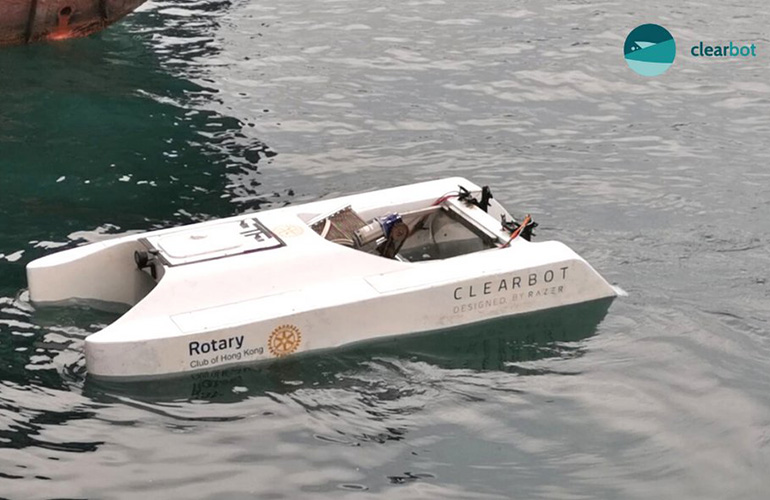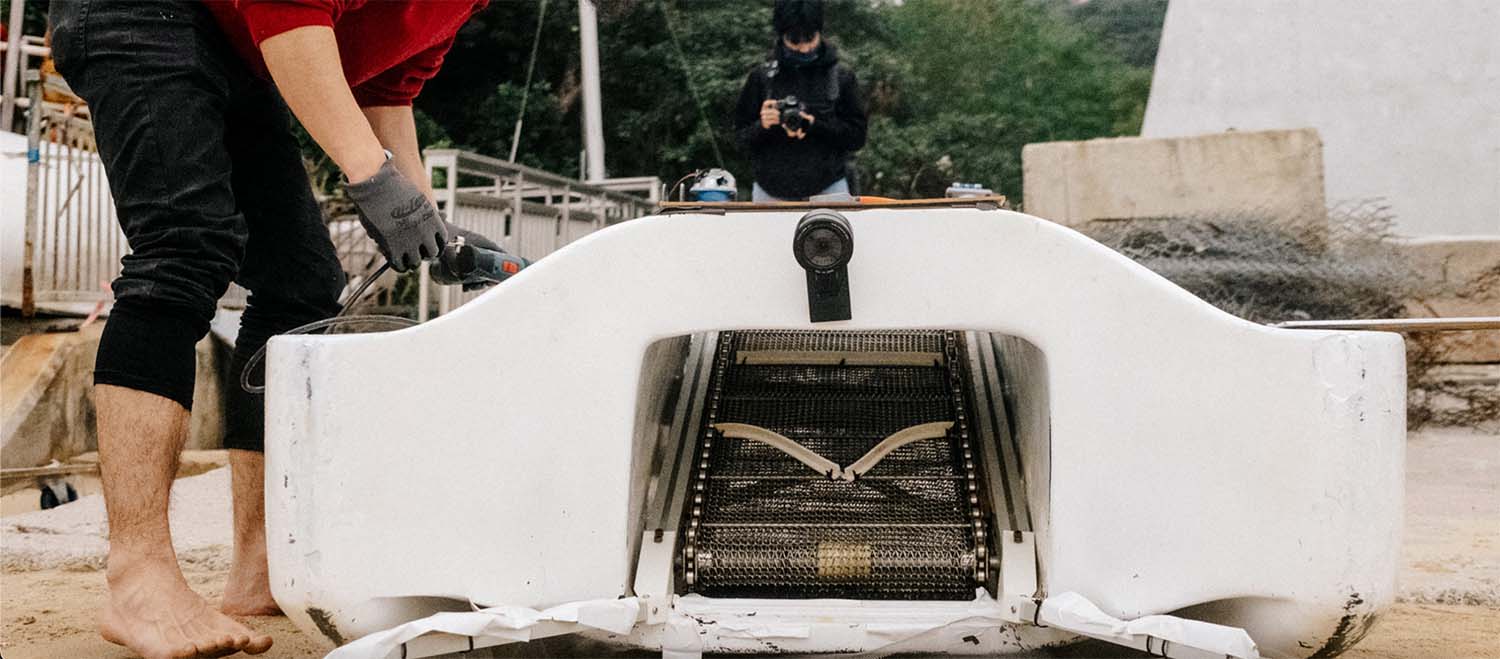|
Listen to this article  |

Clearbot Neo autonomously navigates the water and collects floating trash from its surface. | Source: Open Ocean Engineering
Open Ocean Engineering’s Clearbot Neo is a robotic boat that autonomously navigates harbors, canals and rivers to collect trash that would otherwise wash into the ocean.
Around 14 million tons of plastics end up in the ocean every year, according the the International Union for Conservation of Nature. 95% of that plastic, according to the United Nation, comes from 10 major rivers.
Clearbot’s creators, Sidhant Gupta and Utkarsh Goel, began working on the robot after a trip to Bali, where they noticed local workers heading out onto the water in small boats, or even surfboards, to manually clear trash from the sea so it didn’t wash onto the shore. The two sought to automate the slow, manual process. Shortly after graduating from Hong Kong University in 2019, Clearbot was born.
Clearbot Neo, the latest version of the robot, is about 3 meters long and is powered by a solar-powered electric motor. It autonomously identifies and collects floating garbage in the water. One robot is able to collect a metric ton of trash a day.
Additionally, Clearbot Neo can be fitted with a bespoke boom to help clean up localized oil and fuel spills. The robot can collect up to 15 liters of pollutant a day.
Clearbot Neo is equipped with a two-camera detection system. One camera monitors the water’s surface and searches for trash to clear, as well as any obstacles or marine life. As the robot moves across the water, it scoops up trash onto an on-board conveyor belt between its dual hulls.
The robot’s second camera photographs every piece of trash that comes across the conveyor belt. The image, along with the GPS location of where Clearbot Neo picked it up, is sent to the company’s compliance system hosted on Microsoft’s Azure platform.

Clearbot Neo’s conveyor belt takes and images trash from harbors. | Source: Open Ocean Engineering
Microsoft has played an important role in the development of Clearbot Neo. The company received an AI for Earth grant from Microsoft in Spring 2020, which helped them to build their AI model, also on the Azure platform, over the next year.
With Azure, the data Clearbot Neo collects, along with sea current and tide information, can help environmentalists and marine authorities better identify sources of trash in the water.
“We’re finding out how the trash ends up in the water in the first place,” Gupta said. “It adds a lot of transparency to the process of marine clean-up. We generate data about what’s in the water, what’s the make-up of the stuff that’s there, how much of it is recyclable and what materials we should be focusing on.”
Clearbot Neo has, so far, only been put to use in waters in Hong Kong, where the company is based. However, Gupta and Goel are seeking to globalize their solution to help clean waters everywhere.
Credit: Source link


Comments are closed.